TEAM Scholar Spotlights
The Center for Advanced Research on Language Acquisition (CARLA) and the Minnesota Department of Education (MDE) have jointly sponsored the Teaching Excellence in Action in Minnesota (TEAM) Scholarship Program for K-12 Minnesota world language and ESL teachers since 2012. The Minnesota Council on the Teaching of Languages and Cultures joined this effort in 2020.
Below are highlights shared by some of the teachers who participated in the TEAM Scholarship Program.
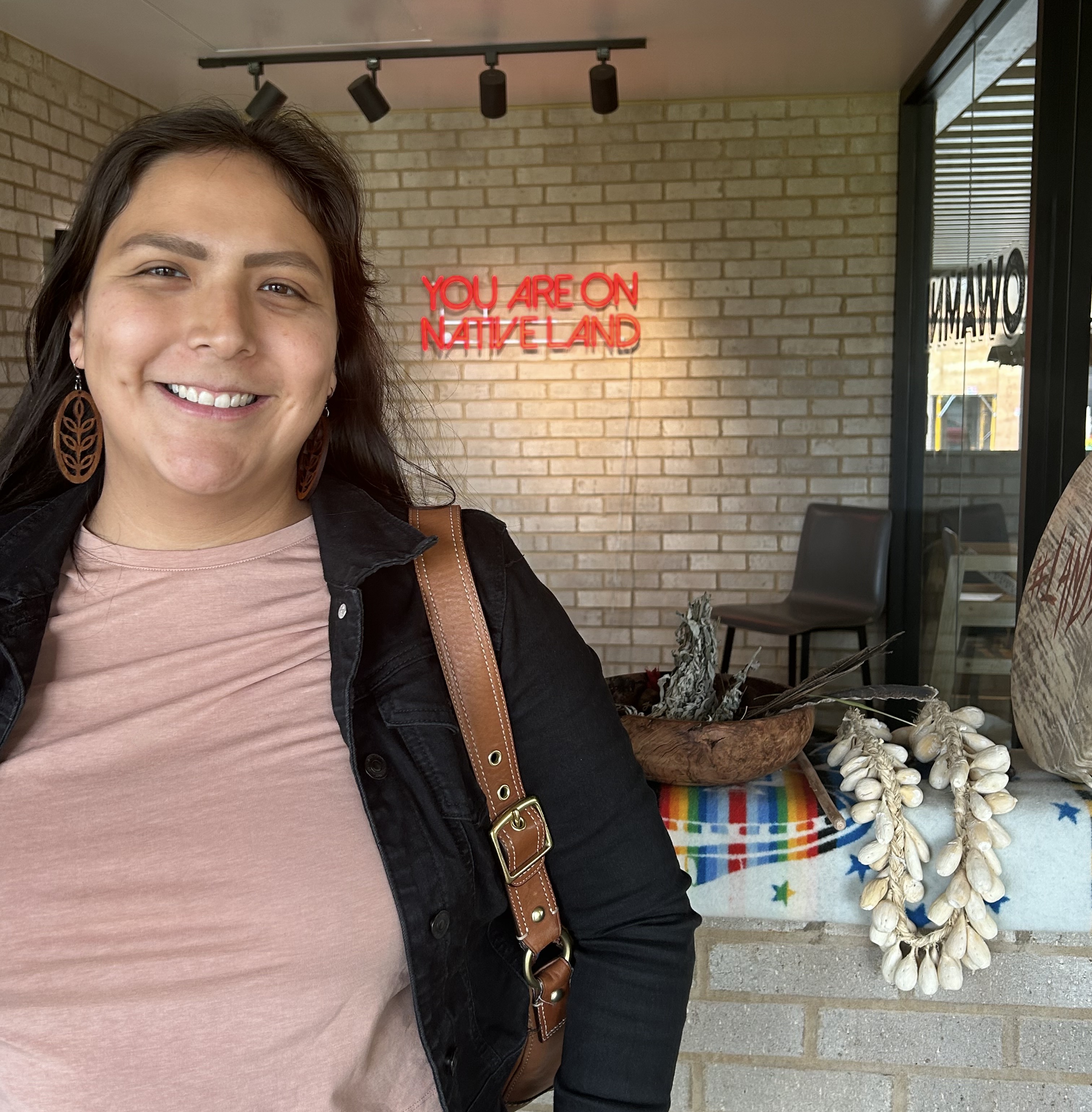 Janelle Johnson
Janelle Johnson
TEAM Scholar in 2023
Institute Attended: Assessing Language Learners' Communication Skills via Authentic Communicative Performance Tasks
How did you benefit from the summer institute you attended?
I first learned about the Integrated Performance Assessment (IPA) from the CARLA website. Being able to learn how to correctly implement it with my curriculum and learn from the expert, Donna Clementi, has positively impacted my career as an educator. I learned from others in the class and Donna about best teaching practices, especially around language acquisition and instruction. I also learned more about what tasks can look like in the classroom and how to ensure they are real-world situations. Learning about language acquisition and the IPA format can assist language revitalization efforts which is the primary context for the language I am teaching. Donna did an amazing job of modeling best practices and the IPA process while she was teaching. After taking the institute and implementing a classroom project right away, I feel more equipped to be teaching a world language.
How did you carry out your classroom-based activity?
I created an Integrated Performance Assessment (IPA) for our ricing unit. The wild rice harvesting season began in August and went into October, so we started off the school year with the unit and it took the class approximately 8 weeks to complete it. Students began learning key vocabulary and phrases in the interpretive mode. In this reading, listening, and viewing mode, students learned the steps of wild rice harvesting and traditional processing. We engaged with authentic materials as much as possible including the Ojibwe Peoples’ Dictionary. We used ricing stories from two books: Portage Lake: Memories from an Ojibwe Childhood and Chi-Mewinzha: Ojibwe Stories from Leech Lake. The students enjoyed “The Ricing Song,” which can be found on YouTube and is from one of our resources, Ojibwe Rosetta Stone. Students used the visuals we had in class to associate the word or phrase with the picture. Next, we prepared for the presentational and interpersonal modes. Here, students had two opportunities to engage in some hands-on learning. We took a field trip to view a ricing demonstration at the lake and students got to try out the harvesting process with the canoe, pole, and knockers. Also, the class viewed a demonstration on the traditional processing of wild rice. We brought in community experts who showed the class how to parch, jig, and winnow the rice. My students practiced vocabulary and phrases during both demonstrations. In the presentational assessment, students presented to a small group of teachers and their fellow language learners on harvesting and processing. Some students drew graphics to show and talk about the steps and others created a slideshow. Finally, in the interpersonal mode, students played charades and acted out the verbs/steps and invited a partner to go ricing.
Do you have other thoughts to share?
Before I took the institute, I did my own research, but I felt lost and wasn't sure if what I was doing was right. At the institute, things began to "click" for me especially when talking about the world language standards because we went into depth about the standards and how each level has indicators of what a learner is able to do.
Janelle Johnson is the Director of American Indian Education and teaches Ojibwe at Walker-Hackensack-Akeley High School in Walker. She belongs to the Leech Lake Band of Ojibwe tribal nation and was raised in Onigum on the reservation. She resides in Laporte with her family. Janelle has studied the Ojibwe language since high school. While the first language of her grandparents was Ojibwe, she remembers being told by her maternal grandfather that it’s something “you learn in the home.” She believes she’s struck a balance between teaching and learning in formal settings like the classroom and speaking Ojibwe to her children at home everyday.
Submitted January 2024.
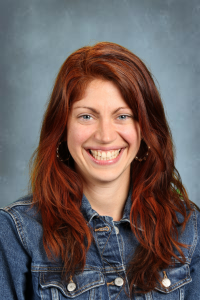 Laura Gehlhar
Laura Gehlhar
TEAM Scholar in 2023
Institute Attended: Creativity in the Language Classroom
How did you benefit from the summer institute you attended?
I benefited from the CARLA institute, Creativity in the Language Classroom, by collaborating with others, exploring the University of MN campus, and being challenged to use a variety of teaching strategies. Because the institute included a variety of language teachers from around the country, I learned more about immersion schools, indigenous language programs, and global opportunities. I often connect with other English Learner Teachers in MN and other public school teachers in my district, but it was so interesting to meet fellow institute participants from other states and learn about their work and consider its similarities and differences to my teaching context.
Experiencing a variety of different learning activities, I have more confidence in being willing to try new things in my classroom. Previously, I was hesitant to incorporate activities related to improvisation, skit writing, or song creation into my teaching because I would be uncomfortable as a participant. Having the experience as a student showed me that with the right support and willing team members, these kinds of activities can be fun! I very much appreciate the high caliber of courses through the CARLA institute program that have helped enrich my professional practice.
How did you carry out your classroom-based activity?
I've integrated a variety of creative ways of teaching and learning into my classroom. I teach an English Language development class for multilingual students at Kennedy High School in Bloomington, MN. There are about 60 students in the cohort at English language (WIDA) level 2. I co-plan with my co-teacher (an ELA teacher) to provide enriching learning activities that support language development and meet ELA standards. Some of the techniques I’ve used since taking the CARLA course on creativity include group/partner work, music, picture prompts, and figurative language. Creativity in the Language Classroom has provided me with several ideas to integrate more creative teaching strategies into my classroom.
Do you have other thoughts to share?
I also appreciated the opportunity to take a course in person at the University of Minnesota Twin Cities. I hadn’t spent a lot of time on campus before this, but my summer institute experience helped me see more of what the U of M has to offer. Now I know a little more about how to talk to high school students about their future plans.
Laura Gehlhar teaches EL at John F Kennedy High School in Bloomington, MN. She has a BA in Psychology from Bethany Lutheran College and a MA in Teaching from Minnesota State University, Mankato. Laura enjoys continuously learning from her multilingual students who have taught her so much about the world.
Submitted January 2024.
 Emma Petry
Emma Petry
TEAM Scholar in 2023
Institute Attended: Assessing Language Learners' Communication Skills via Authentic Communicative Performance Tasks
How did you benefit from the summer institute you attended?
One of my favorite parts about the summer institute was being able to collaborate with other language educators. I was one of the youngest there, so I enjoyed being able to learn from other teachers’ experience and gaining new ideas and fresh perspectives on what it means to teach a language. I also learned how to craft an integrative performance assessment. I had never done one before so this class was integral in my ability to start implementing this kind of assessment in my classes.
Using IPAs in my Spanish classes has boosted student engagement and made learning more applicable for students. One of my goals was to get students speaking the language more and having specific time and assessments to focus on interpersonal communication has really helped with this. The school I teach at uses standards based grading and implementing IPAs has benefited my gradebook. I now have the standards set to ACTFL’s 5 C’s (and I break down communication into the three modes) and it makes so much more sense to me and to students!
How did you carry out your classroom-based activity?
My goal this semester was to implement 2-3 IPAs in my Spanish classes. I found it easiest to revise assignments I already had into IPAs. This way I didn’t change what I was teaching, just the method of assessment. My first IPA was in my Spanish 1 class. 8th graders interviewed a partner on likes/dislikes and character traits (interpersonal), created a presentation to introduce their partners (presentational), and then viewed other classmates’ presentations and answered comprehension questions (interpretive). I have done a similar project in the past, but with this new format students were more motivated to complete the assessment and their final projects were more polished. The second IPA I created was for my Spanish 3 class. Students were learning when to use the preterite and imperfect tenses. To make this unit more applicable to real life, their assessment was to read a story and find the preterite and imperfect verbs (interpretive), write their own stories using the preterite and imperfect tenses (presentational), and then read and discuss their stories with students at a Spanish immersion school (interpersonal). Another thing I learned and applied from class was to extend the IPA beyond the classroom. This was accomplished by having students share their stories with elementary students from another school.
The last IPA I implemented this semester was in my Spanish 4 class. They learned about Latin American Christmas traditions by reading an infographic and answering comprehension questions (interpretive), discussed their own Christmas traditions with classmates (interpersonal), and recreated a holiday tradition to present to classmates (presentational). We had so much fun hitting pinatas, eating grapes, and even skateboarding as students had hands-on opportunities to experience these traditions!
Do you have other thoughts to share?
It was great to meet both Spanish teachers and teachers of other languages through the institute. The activities we did in class and the final IPA we created helped me grow my craft as an educator so that I can better teach my students.
Emma Petry teaches middle and high school Spanish at Avail Academy in Fridley, MN. She holds a B.A. in Spanish Education from the University of Northwestern, St. Paul and has been teaching for 4 years.
Submitted January 2024.
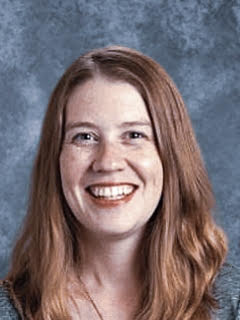 Christine Dietz
Christine Dietz
TEAM Scholar in 2022
Institute Attended: Implementing Reflective Practices and Portfolios in the Language Classroom
How did you benefit from the summer institute you attended?
I spend much of my time leading professional learning for the other teachers, so being able to
be a student and learn from other dedicated language professionals was wonderful. Goal
setting and reflection is something that is often talked about, but in my previous experience it
seemed more like a hoop to jump through as opposed to something meaningful that helped the
learners move forward. My district has started to implement competency-based learning, and
student reflection is a huge part of that approach, yet there wasn’t a lot of discussion around
what this would look like, especially for our multilingual learners. The content of the institute
helped me to lay the foundation for what meaningful reflection could look like, especially with
my newcomer English Learner (EL) classes. I appreciated that the weekly assignments were
designed to be practical. I also appreciated getting feedback from other professionals. I felt
more prepared for the school year than I ever have before thanks to this institute.
How did you carry out your classroom-based activity?
My outreach project had an impact on both my own classroom and other teachers. Within my
own classroom, the Reflective Practices CARLA institute helped me refine how to engage
newcomer ELLs in reflective practices.
This year, my students have set up a diary portfolio for the class where they can track their progress throughout the school year. We also have a co-created portfolio that tracks their progress on the summative assignments they have completed. Through the use of visual word banks and translanguaging, even my newest to country students are able to reflect at the end of each week on the things that they improved on, the challenges they faced, and what they are proud of. I also have piloted and adjusted the peer review practices that I designed during the institute. In addition, the goal setting and reflective assignment I designed to help students practice their English over MEA break was also implemented in my classroom. These reflections are especially powerful to share with their families during parent-teacher conferences.
The other half of my day is spent supporting LT-ELLs in a supported study hall. A design team for this pilot program met over the summer, and the information I gleaned from the institute was used to design the weekly reflection form that is used by 16 other teachers, as well as the staff learning around the implementation of the weekly reflection. I also helped to create a rubric for how students are engaging in the reflective practices.
Do you have other thoughts to share?
Though I was the only EL teacher in the group, and one of the only high school teachers, I felt
like the conversations I had with other teachers helped me get ideas that I wouldn’t have come
up with on my own. This institute also helped me better articulate the how and why for
engaging in reflective processes, especially through the lens of language acquisition.
Christine Dietz teaches English at Spring Lake Park High School. She holds a B.A. in Psychology
from the University of Minnesota, and a M.A. in Teaching from Hamline University. In addition
to teaching, she has completed research in the areas of addressing the needs of long-term ELLs
and had opportunities to present her research at the 2018 and 2020 MinneTESOL Conferences
and the 2022 WIDA Conference.
Submitted December 2022.
 Eglantina Cenolli
Eglantina Cenolli
TEAM Scholar in 2021
Institute Attended: Content-Based Language Instruction and Curriculum Development
How did you benefit from the summer institute you attended?
The institute helped me realize the close and inevitable presence of content, culture, and language in
students' academic success in mastering all three and constantly improving this mastery beyond
mastery in time and various situations. The institute was an eye-opening experience in planning to teach
intentionally to maximize learning results.
How did you carry out your classroom-based activity?
I started with a classroom-based activity, where I created a lesson plan focusing on increasing awareness about the challenges and struggles immigrant students face in the United States. I followed a Universal Planning Design to outline the daily objectives for both content and language, as well as to outline the activities for each section of the lessons. Having a clear understanding of where I wanted my students to be at the end of the unit, and what they would have been able to perform and achieve proved helpful in identifying useful and necessary vocabulary and language structures that students would use in various activities through these lessons. In addition, having a clear final goal and evaluating activities against the final goal and specific objectives allowed me to choose effectively among activities and skills to focus during the lessons. Finally, the structure of the whole unit became more solid and with smoother transitions from one day to the next as activities and lessons were more meaningfully connected.
I presented my classroom-based activity to my department and during a professional development event organized by our school building. ESL teachers found the idea of content-based language instruction to be fabulous and many were interested to try it out. I practiced it for one unit with my co-teacher (who teaches math) and both of us felt more successful than before in achieving both content and language goals simultaneously. We are incorporating this practice into aligning content and language objectives for each standard and benchmark in all four main content areas.
Would you like to share any other comments about your experience?
The institute and the follow up activity provided very useful practices and experiences that helped bring my teaching skills to the next level.
Eglantina Cenolli teaches English as a Second Language at the 6–8 grade level at North Junior High School in St. Cloud, MN. She has a doctorate in Higher Education Administration, but her passion for teaching and love for kids has inspired her to keep teaching English and Mathematics to middle school students. She enjoys seeing the lightbulb go on for her students–when things, knowledge, and experiences make sense to them. Eglantina is a mom of two teenage boys who make her proud every day and give her a better understanding of her students.
Submitted March 2022.
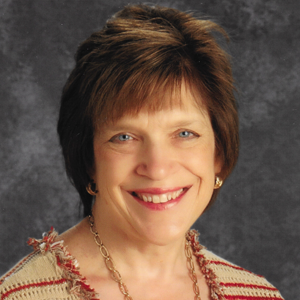 Pam Harens
Pam Harens
TEAM Scholar in 2021
Institute Attended: Foreign Language Literacies: Using Target Language Texts to Improve Communication
How did you benefit from the summer institute you attended?
I benefited from the Foreign Language Literacies Institute in a number of ways. First, I had the opportunity to learn about foreign language literacies, a pedagogy I hadn’t heard of or studied before. Second, it gave me the opportunity to take a course from Kate Paesani and Mandy Menke, both very knowledgeable and engaging instructors. They both did a wonderful job instructing this synchronous online institute and I thoroughly enjoyed learning from them. Third, I was able to meet, share ideas, and learn from teachers from all over the country.
How did you carry out your classroom-based activity?
I created a multiple literacies lesson around the song “No Tengo Dinero” sung by Colombian singer Juanes to use with my high school’s Spanish 2 classes. The literacy learning objectives were that students would be able to 1) identify grammar studied in class (stem-changing verbs and negative words) in a song in Spanish; 2) describe the main idea of a song in Spanish; 3) describe what a new negative word (“ni”) means and the role it plays in presenting the song’s main idea.
Would you like to share any other comments about your experience?
I love being able to meet teachers through the CARLA institutes. It is always humbling to be among such gifted, talented, and dedicated teachers and instructors and a true gift.
Pam Harens is a Spanish teacher at Eastview High School in Apple Valley, MN. She holds a B.A. in English from St. Olaf College and a B.S. in Spanish, a B.S. in Second Languages and Cultures Education and a M.A. in Education from the University of Minnesota. She has been teaching Spanish for the past thirty-five years. She also currently serves on the Board of Xperitas, a non-profit organization dedicated to providing authentic immersion travel programs to students and their teachers.
Submitted December 2021.
 Susanna Stone
Susanna Stone
TEAM Scholar in 2021
Institute Attended: Teaching World Languages and Cultures in Elementary Settings
How did you benefit from the summer institute you attended?
It would not be hyperbolic to say that the CARLA Institute was life-changing. From the CARLA Institute I learned how to restructure my curricula, plan units using backwards design, and incorporate social justice in my lessons. The information, resources, and connections I received during the Institute were EXACTLY what I needed. While my main project was to complete a first-grade unit, all of the grades I teach have been impacted from what I learned at the institute. My teaching will continue to evolve, but I now have the background knowledge, foundational skills, and accessible resources to successfully teach Spanish for years to come.
How did you carry out your classroom-based activity?
My main goal for the institute was planning a first-grade unit. The unit I planned during the CARLA Institute is called ¿Qué veo en mi mundo?/¿Qué hay en mi mundo? (What do I see in my world? What is in my world?), a unit about colors, shapes, and numbers. This unit was developed to present these topics in a more wholistic, thematic manner. I developed the general unit outline, major parts of the unit (can-do statements, assessments, general activities), and the first two lesson plans during the CARLA Institute. I completed the remaining lesson plans this fall.
I am currently teaching this unit to my first-grade students and have been pleasantly surprised at how well the lessons are going. I began by presenting a piece of art by Joan Miró and asked the students ¿Qué colores ves? (What colors do you see?) Students told me the colors and pointed out the colors in the artwork. Participation was robust and engagement was high! After that lesson, students reviewed color words with Boom Cards, sang color songs, identified colors in their classrooms, and read Spanish stories that used the color words. We then utilized the same Joan Miró painting to talk about shapes. We practiced talking about shapes by identifying shapes we saw in the classroom and on videos we watched. As a final assessment, students will create their own artwork, based on Joan Miró’s style; identify the colors and shapes in their artwork; and present the artwork to the class.
Would you like to share any other comments about your experience?
Attending the institute gave me a multitude of resources, connections, and information that has made me a better teacher. My self-confidence has increased, my lessons are more engaging, and my students have benefitted from my participation in the CARLA Institute.
Susanna Stone teaches Spanish at the preK–8th grade level at Rochester Central Lutheran School in Rochester, MN. She has previously taught Spanish at the college level in Missouri. She has a B.A. in Spanish and History from Knox College and an M.A. in Spanish with a Language Teaching Emphasis from the University of Missouri.
Submitted February 2022.
 Katrina Van Ruyven
Katrina Van Ruyven
TEAM Scholar in 2021
Institute Attended: Assessing Language Learners' Communication Skills via Authentic Communicative Performance Tasks
How did you benefit from the summer institute you attended?
The CARLA summer institute was super engaging and helped me to dig deep into creating authentic performance tasks. I was able to compare rubrics such as ACTFL, WIDA, etc. and use those to create rubrics that were applicable across activities in general education classrooms at a variety of levels. I particularly benefited from discussions around what makes an authentic communicative assessment, the purpose of assessment, and comparisons of the different standardized speaking rubrics.
How did you carry out your follow-up outreach activity?
During workshop week in my school, I conducted professional development for teachers on implementing oral language proficiency activities in their classroom. The focus of the 90-minute session was how to assess and give feedback for oral language activities. Teachers were able to see examples of speaking rubrics and had time to make their own for activities in their classroom. I believe that this professional development will provide an opportunity for students in my district across Grades 3-12 to have authentic oral language activities with useful teacher feedback.
Would you like to share any other comments about your experience?
This institute reignited my passion for authentic language learning. It was energizing to be in a community of language teachers and to have a creative cohort. The relationships and professional development will continue to influence me in the years to come.
Katrina Van Ruyven is a Curriculum and Instruction Specialist at Bloomington Public Schools and formerly taught English as a Second Language at Valley View Middle School in Bloomington.
Submitted January 2022.
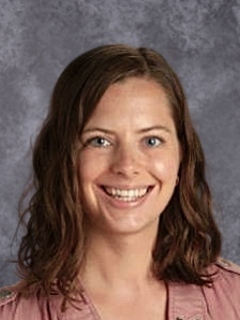 Ellen Chirhart
Ellen Chirhart
TEAM Scholar in 2020
Institute Attended: Teaching Language Through the Lens of Social Justice
What did you learn at the summer institute you attended?
I knew when I first started my Master’s program almost two years ago that I wanted my capstone to be connected to social justice and the teaching of my Heritage Spanish courses. I had zero knowledge and experience teaching through a social justice lens prior to participating in the CARLA summer institute. The summer institute connected me with like-minded educators and gave me ample tools and resources I needed to be able to begin my capstone project this semester. Even though my capstone project won’t be completed until this spring, in the meantime I have been able to revamp existing units and activities to better engage my heritage students. They have been grateful for meaningful learning opportunities and for the ways in which I bring difficult events going on in our world into the classroom. I know this is only the beginning of implementing my curriculum changes, but the summer institute truly transformed my approach to designing curriculum for my heritage students.
How did you carry out your follow-up project and outreach activity?
Before the beginning of the school year, I made a presentation about why we must advocate for the teaching of world languages through a social justice lens. This presentation was shared with world language teachers at both high schools in my district. We brainstormed ways we could tweak existing units to have a social justice lens based on exercises and discussions we had in class during the CARLA Summer Institute. Then, I began recreating my unit on education for my Spanish for Heritage Speakers 2 course. The unit on education is the first unit of the year. I connected it to several Teaching Tolerance Social Justice Standards. First, we learned about the history of education in the United States by watching the movie Walkout and investigating events like the Lemongrove Incident. Students questioned why these events are never talked about in their history classes. We examined schools around the world today and how schools have adapted since the coronavirus pandemic. Students discussed what they noticed about the impact of resource allocation and funding. Then, students created surveys on topics like mental health, homework, and the hybrid model of learning. Students administered their surveys to their peers and presented an analysis of their results. Based on results, students had to suggest changes to school policies. Students are now beginning their final project for the unit, which is to advocate for an existing policy or advocate for a creation of a new policy related to education. They will share visual presentations and will write a short paper synthesizing sources that support their policy and reflecting on what they have learned in the unit. I am currently working on my Master’s capstone project on the impact of teaching through a social justice lens on heritage Spanish students.
Would you like to share any other comments about your experience?
The professional development I've gotten through the CARLA summer institutes is better than any other training I have completed, period. These programs are so relevant and helpful. It would not have been possible for me to attend the institute without this scholarship opportunity. With the amount of change and stressors added to this school year, it means the world to me that I can feel confident about empowering my students and engaging them thanks to what I learned at the summer institute.
Ellen Chirhart teaches Spanish and Spanish for Heritage Speakers at Irondale High School in New Brighton. She has a B.A. in Spanish from Gonzaga University and has been teaching for six years. She will receive her Master of Arts in Education from Hamline University in May 2020.
Submitted November 2020.
 Tim Leone-Getten
Tim Leone-Getten
TEAM Scholar in 2020
Institute Attended: Critical Approaches to Heritage Language Education
What did you learn at the summer institute you attended?
The CARLA Summer Institute on Critical Approaches to Heritage Language Education was extremely valuable to me and my students. While I have been teaching heritage language classes for a number of years, this institute came at the perfect time to inspire me to rethink and de-colonize my curriculum and make sure that I am putting my
students, their identities, their families and cultures at the center of what we do. It is not enough to improve our Spanish skills, we need to do it at the same time as investing in a deep study of students' cultures and history. This institute was a great opportunity for me to reinforce prior learning, pick up valuable new ways of thinking and teaching and to connect with an amazing group of fellow educators from around the country. The institute was extremely well designed and expertly facilitated by the instructors.
How did you carry out your follow-up classroom project?
My project was to redesign the curriculum for my Spanish for Spanish Speakers classes. I have two classes of
approximately 25 students each in grades 6-12. Some of my students speak Spanish at home, some attended
Spanish immersion elementary schools, and some both. The main thing they need to work on is to develop their
literacy skills in Spanish. Starting this year in distance learning has presented some difficult challenges for all of us
teaching languages in a communicative way. Just getting students to turn on their cameras and speak can be
difficult. I have used a variety of ideas from the summer institute in my classes this fall. We started out with the
Foto Voz activity where students share a photo that tells something about who they are and where they are from.
This was a great way to kick off the year, with students sharing significant stories about themselves and their
families. We then launched a Mi Nombre essay writing project. Students created beautiful essays that explored
their names, their families and their cultures. There was a great deal of meaningful discussions as well as a high-
quality piece of writing for their portfolio. Next, students engaged in a project I call Mi Canci—n, where they select a
song in Spanish that is inspiring to them personally. They create an oral presentation with slideshow that outlines
the artist, explores the songs lyrics and themes, the musical genre and why it is meaningful to them personally.
Would you like to share any other comments about your experience?
Helping teachers to engage in meaningful, profound professional development is such an important, yet often
overlooked, way to impact education. I have been teaching for 29 years and this institute was one of the best I
have attended. It has led to many positive outcomes for my students especially this year when they need so much
more support.
Tim Leone-Getten is the Program Coordinator and teaches Spanish to students in grades 6-12 at Open World Learning Community, an EL Education School in Saint Paul Public Schools. He earned his BA from Carleton College, an M.Ed. from the University of Minnesota and has been teaching Spanish and ELL for 29 years. He was the St. Paul Rotary Club Teacher of the Year in 2012.
Submitted November 2020.
 Laura Moy
Laura Moy
TEAM Scholar in 2020
Institute Attended: Using the Web for Communicative Language Learning
What did you learn at the summer institute you attended?
Teaching online is so different than teaching in person. From my summer institute, I learned the importance of videos or activities that teach students how to use new technology before using it for an academic purpose. Because of that, prior to using Zoom for teaching, I had students learn the various functions and be sure they all could complete basic tasks. I also learned that I needed to do this for each new online tool. Thus, when I introduced a new web tool, I would first teach students about the tool and complete a simple activity to be sure they all understood what to do before it was worth points academically. The second most important item I learned was to connect more with world language teachers from around the U.S. via online groups and listservs. I had no idea so much information existed and was so accessible. I now daily am able to connect, learn and ask questions to a large number of world language teachers instantly. Finally, I had the opportunity to meet other great teachers from around the U.S. in class. It was wonderful to spend the summer learning with such an amazing array of World Language professionals.
How did you carry out your follow-up projects?
My project was both a classroom-based and an outreach activity. With this project, my goal was to increase student interaction and learning while teaching online, while helping other teachers do the same. I worked with my district to purchase online programs that I learned about from the class, specifically Extempore. The district was able to purchase it for all world language teachers in our district. Next I reached out to the district to use an interactive slideshow. Although Voice Thread was not available through my district, Nearpod was. I, along with my Assistant Teacher, were able to learn how to use the various features of Nearpod and then teach it to three groups of teachers. We were able to share using it with my world language department at school, the Minnesota group of Japanese teachers, and nationwide at a Japanese teacher online group. We were able to share how we used it and the successes of using an interactive slideshow where we can see in real time how students are doing. Online I shared the positive aspects, the different functions and how we can get students to read, write, listen and speak. At school, I was able to help teachers who were using it and had specific questions and help them troubleshoot when technical issues arose. With this project I was able to reach my 165 students and Japanese world language teachers around the U.S.
Would you like to share any other comments about your experience?
This course gave me such a great connection to world language teachers, outside the small circle of the language that I teach. Our school is not always able to cover the cost of professional development, so attending CARLA was a true gift. Also, with COVID and the sudden switch to online learning, I was extremely grateful for the chance to learn from the top professors in this area. The knowledge and peace of mind it provided was priceless.
Laura Moy has been a Japanese teacher for twenty years. She has taught in Osaka-Japan, California, Hawaii and Minnesota. Currently, she teaches at Eastview High School in Apple Valley, Minnesota. In terms of professional organizations, she has been the President of NCJLT (National Council of Japanese Language Teachers) and currently is the president of the local affiliate MCTJ (Minnesota Council of Teachers of Japanese). She has her Masters of Education from the University of Minnesota's Second Languages and Cultures' Post-bac program.
Submitted January 2021.
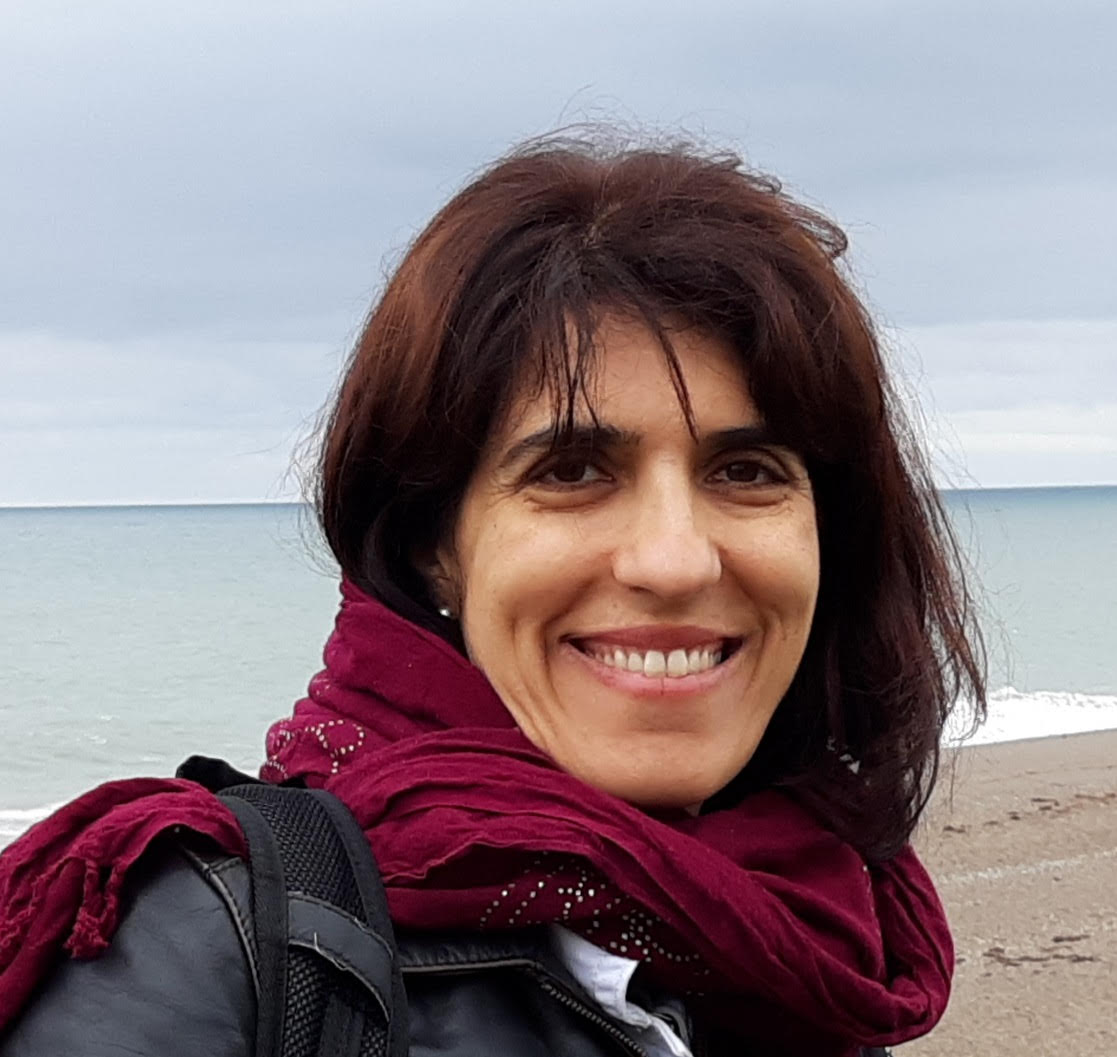 Leticia Stabrino
Leticia Stabrino
TEAM Scholar in 2020
Institute Attended: Culture as the Core in the Second Language Classroom
What did you learn at the summer institute you attended?
One of the aspects of the institute that helped me the most was learning how to use the “3 Ps” to teach culture in the world language classroom: Products, Practices, and Perspectives. It not only guided my work in the class where I did my project, but also in other classes I teach.
The institute readings refreshed many things that I had been exposed to in graduate school. I realized that I have been embedding my classes with cultures for a long time. Although I have also worked with Understanding by Design in the past, it was useful to review this approach. Based on the content-based instruction curricular model use in the institute, I learned how to use authentic materials which was both challenging and interesting.
How did you carry out your follow-up classroom project?
My project was carried out in a high-level International Baccalaureate (HLIB) Spanish course, which is equivalent to levels 5 and 6 Spanish courses. The HLIB course includes five overarching themes: identity, experiences, human ingenuity, sharing the planet and social organization. This project was part of the social organization theme. The goals in this project were for the students to recognize established unfairness and injustice in a society different from theirs; to explain diversity among products and practices and how it relates to perspectives; and to suspend judgment while critically examining products, practices, and perspectives. Our main texts were the movie “Roma” and the theatre play “El delantal blanco.” The essential questions that students used to guide their learning were: How are working conditions defined by social class?, and How much is different people’s time worth and why is that so? Students showed their understanding of the topic and the appropriate use of the language through reading different texts published in various countries in Latin America that examined legislation concerning the work that domestic workers perform and domestic workers in general. Students worked on their presentational skills by changing the ending of the theatre play that was written in the 1950s to a more contemporary ending in which the laws regulating domestic work are taken into account.
Would you like to share any other comments about your experience?
This scholarship allowed me to attend an institute that updated and enriched my knowledge. Going back to teaching after 15 years away from the classroom was a difficult decision and having the chance to attend professional development supported my commitment to my students and myself as a professional.
Leticia Stabrino teaches upper-level Spanish courses at Roosevelt High School in Minneapolis. She has her Master’s in Education from Hamline University and has been teaching for the past 15 years. Leticia comes from Uruguay and has been in Minnesota since 2015.
Submitted March 2021.
 Kadie Becker
Kadie Becker
TEAM Scholar in 2019
Institute Attended: Exploring Project-Based Language Learning
What did you learn at the summer institute you attended?
The institute “Exploring Project-Based Language Learning” was invaluable in providing me with the experiential knowledge, materials, and confidence to create a project-based language-learning experience and develop a training to help my school’s teachers do the same. The institute highlighted the research that supports this way of language teaching and gave us the practical tools for how to incorporate language learning into a project’s design through thoughtful planning and scaffolding of activities. During the institute, I was able to go through the process of designing a project-based language learning experience for my students, receive helpful feedback from classmates, and create ready-to-use materials and assessments for my unit. In addition to enjoying the institute as a “learner,” I was also able to glean helpful insight into being a “facilitator” for this type of workshop, including how to facilitate feedback sessions and the sequencing of important steps in the process. I also was able to collect engaging and useful material that I could use in my follow-up activity, which was a professional development workshop for teachers at the beginning of the school year on project-based language learning.
How did you carry out your follow-up outreach activity?
Before the school year started, I was given the opportunity to lead a one-day training on Project-Based Language Learning at my school for our teaching staff. I focused my workshop on providing teachers with the tools I received from the institute to look at one of their already-developed project-based units through the lens of language learning. I used ACTFL’s three modes of communication (interpretive, interpersonal, and presentational) to help guide teachers’ thinking about the “purpose” of the language used in the project since they are used to thinking about language development through the lens of reading, writing, speaking, and listening. In addition, I used Cherice Montgomery’s resource “Identifying a Student Learning Outcome (SLO) for the Project” to give teachers a sentence frame to guide student learning outcomes (or objectives) and multiple examples to complete the frame. Teachers found these language tools and ways of thinking about language use very useful. Using a pre- and post- survey tool, teachers indicated that their familiarity and sense of self-efficacy in implementing project-based language learning units in their classes had increased due to the training.
Were you able to use what you learned in other ways?
I am currently in the midst of implementing my project-based language learning unit that I had developed during the institute in my social studies class for recently-arrived, multilingual learners. It is called “Don’t be Bored!” What a learning experience for all of us! While I received a lot of feedback on the project throughout its conception during the institute, actually doing it with the students has been such a learning experience by showing me additional scaffolding that was needed in the area of language production to accomplish certain tasks within the project’s formation. In addition to this insight, I am seeing how students who are learning language and content to accomplish an immediate task are much more engaged in their learning. We have conducted surveys in other classes in the school, used public transportation to go to the Apple store in the Mall of America to learn how to use a video app to make our final product, and explored a local landmark as an example of a cheap and accessible recreational and education activity. One of my biggest “ah-ha” moments so far in the project has been the growing awareness of the multiple cross-curricular connections implementing this project has created and the numerous skills I am able to incorporate into a single project. For multilingual learners who are new to the country and needing to accelerate their English and content learning, project-based language learning is proving to be an effective and enjoyable way to teach (and learn) from my students.
And we are not done yet! We still have our final products to create and then advertise to our school what we’ve done. In the future, I plan to share (and have my students share) about this whole experience in a creative, multimedia format for both my colleagues and my students’ parents.
Kadie Becker is the ELL Coordinator at Lincoln International High School in Minneapolis. Lincoln HS specializes in serving students who are recent immigrants and refugees from many countries including Ethiopia, Djibouti, Togo, Uganda, Iraq, Kuwait, Somalia, Mexico, and Ecuador.
Submitted January 2020.
 Linda Jones
Linda Jones
TEAM Scholar in 2019
Institute Attended: Exploring Project-Based Language Learning
What did you learn at the summer institute you attended?
I realized that by having authentic tasks and authentic deadlines, students really do engage in the process and the product. They see the "need-to-knows" and actually help me to create them. This type of learning is really meaningful to the students since they can see what they need to do to complete this project successfully. They care because they can see that their project is not made up; it is a real product with real meaning. I can see that it really helps facilitate learning in another language, as the students see the need to create something that is entertaining, educational and also easily understandable.
How did you carry out your follow-up activity/project?
My middle school students’ project was to create a children's book in Spanish. Each student was paired with a kindergarten partner in a Spanish Immersion program at another school as part of longer term (1-2 year) partnership. During the fall, my students created a bio and a video to share with their kindergartner/partner. The project will culminate with a published children's book, which my students will give to their kindergartner. Elements of the kindergartner's life, personality, traits, etc. are woven into the book.
The premise is that there is not enough diversity in children's books, and we, the authors can create books that better represent the diversity of our readers. My teacher partner is an immersion kindergarten teacher who is the recipient of these books (her students). We are already having our students learning more about each other. My students are excited about the project; they have also been humbled to work with students whose native language is Spanish!
Would you like to share any other comments about your experience?
This institute really helped me design a unit, which I can successfully carry out in my classroom. Not only did I design a unit, but a unit, which I think can be shared with other teachers. It is a "Gold Standard" unit and I am proud of it. Thanks to the collaborative nature of this institute, I was able to create something useful and extremely authentic.
Linda Jones is a veteran Spanish teacher at Highland Park Middle School in St. Paul where she teaches non-immersion classes in grades 7 and 8. She also serves as the coordinator for the International Baccalaureate Middle Year’s Program at the school. She has a B.A. in Spanish education and music from Northern Arizona University and an M.S. in Peace and Conflict Studies from the University of North Carolina.
Submitted January 2020.
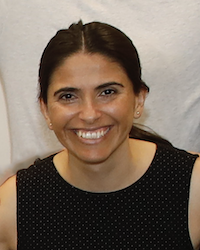 Monica Nichols
Monica Nichols
TEAM Scholar in 2019
Institute Attended: Culture as the Core in the Second Language Classroom
What did you learn at the summer institute you attended?
Before taking "Culture as a Core in the Second Language Classroom," I had no idea how to teach the target culture to my students. I also struggled to make the link between language usage and teaching culture. After taking the class, I feel confident that I can teach about the Hispanic culture in a way that highlights its beauty and is relevant to my students. Additionally, the course helped me understand that learning about other cultures is more than naming a few facts and customs. Instead, culture has to do with people’s perspectives and practices.
How did you carry out your outreach activity?
I shared the Cultural Unit on Typical Dishes I designed in the institute with my Professional Learning Community. I also shared the main authentic text I used for the unit and a list of cultural products I would bring to the class. At the end of the presentation I explained some of the successes and challenges I faced when teaching some lessons, since I believe in the importance of learning from mistakes and getting input on how improvements can be made.
Would you like to share anything else about your experience?
I now feel more confident about how I can best teach culture to students. I also know which questions to ask students to give depth to their learning. Additionally, I have been able to design another cultural unit for third graders and I am looking forward to working on another one for fourth graders.
Monica Nichols is a veteran Spanish teacher at Eagle Heights Spanish Immersion in Eden Prairie where she teaches grades K–6. She is currently working on her Master's degree in the Second Langauges and Cutltures program at the University of Minnesota.
Submitted January 2020.
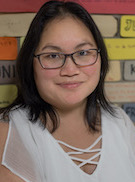 Pang Yang
Pang Yang
TEAM Scholar in 2019
Institute Attended: Teaching Heritage Languages and Learners
What did you learn at the summer institute you attended?
I loved Jenna and J's level of knowledge and expertise in teaching heritage languages with the social justice lens. It gave me the foundation I needed to be successful this year. The resource sharing within the class was something that I have never experienced in any college course. Everyone was so willing to share their expertise and resources with the class.
How did you carry out your proposed project?
I have been investing a lot of time making sure I carry out the Youth Participatory Action Research (YPAR) curriculum, in addition to making YPAR my professional growth plan. In August, I met with my colleague who taught Spanish for Native Speakers III and was also implementing YPAR in her class. Our literacy coach helped us write our units and develop assessments as part of the IB Middle Years Program. Students will be embarking on their action research project soon.
So far, I have shared what I've done with Kare II News and I’ve mentioned the work that I'm doing with YPAR at a few conferences. My principal has been very supportive of YPAR and the work we are doing in the Hmong for Native Speakers Program. After this year, my colleague and I plan to write grants to bring a team of students to present at the 2020 conferences of MCTLC and ACTFL.
How did this scholarship support your work?
This scholarship helped keep me accountable to keep doing the YPAR curriculum with what I learned at the institute. I'm on a journey, continuing to learn and broaden my horizon because I don't know everything yet. I am always seeking ways to improve and make the learning in my heritage class more transparent in how it is related to my students’ lives. I feel that students who are in my Year 3 program will have the skills to problem solve, critically think, and make their community a better place.
Pang Yang has 20+ years of K-12 classroom experience includes the teaching of English Language Learners and Hmong Heritage Language Learners. She teaches Hmong for Native Speakers classes at Park Center High School in Brooklyn Park. She is an active member of the Coalition of Asian American Leaders and is the co-convener of the National Coalition of Hmong Teachers. She holds a B.A. from Concordia University and a Masters of Arts in English as a Second Language from Hamline University. Pang was selected as MCTLC's Teacher of the Year in 2019.
Submitted January 2020.
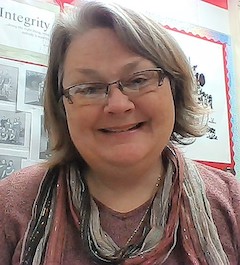 Kathryn Jensen
Kathryn Jensen
TEAM Scholar in 2018
Institute Attended: Developing Assessments for the Second Language Classroom
What did you learn at the institute you attended?
I thought that this institute was amazing. Professionally I have been on about a five-year journey in adapting the ways in which I choose to assess my students. This institute provided me with access to the latest, most relevant information possible–and access to a presenter who gave us a veritable wealth of personal as well as pedagogical information. I also found affirmation that I am on the right journey, and also felt that I had some experiences, insights, and resources to share with the other colleagues who attended.
How did you share what you learned?
Immediately after completion of the institute I took the knowledge I had gained and directly applied it during a summer curriculum/CSA (common summative assessment) writing session for levels 2-4 of high school Spanish. I referred often to the written and online materials provided by the institute. In addition, I was able to provide a PD session to all of the world language teachers in our district during our back to school workshop week on changing assessment paradigms and the application of the use of rubrics as we move further towards standards-based grading. The session was well received and I was asked to provide a follow-up session later in the year. My district is better for me having been granted the opportunity to attend.
Do you have any other comments?
I am so thankful for this opportunity to grow in my own professional capacity and to share what I learned. Empowered and knowledgeable leaders can lead the wave of change which can show the world the importance of what we do!
Kathryn Jensen is veteran a high school Spanish teacher at Coon Rapids High School. She holds a B.A. in Spanish and a Master’s of Education from the University of Minnesota.
Submitted February 2019.
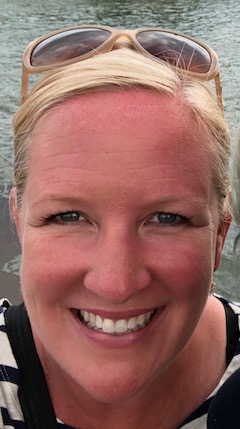 Elizabeth Butterfield
Elizabeth Butterfield
TEAM Scholar in 2018
Institute Attended: Growing Learner Language: A Hands-On Approach to Developing the Language Learners Produce
What did you like best about the summer institute on Learner Language?
The connections I made at the institute were very beneficial to my teaching. The class emphasis on teaching language that is functional and practical, as well as focusing on critical thinking has informed my lesson planning all year.
How did you apply what you learned in your classroom?
I started the year with an ESL class that was focused on justifying a position on a controversial topic, and supporting that position with facts. This required research and vetting of sources. I used academic language frames that encouraged critical thinking while improving academic language use. The institute has made me a better ESL teacher by giving me tools that actually empower the students to take ownership of their own learning-- specifically error correction and analyzing their own writing.
What would you like other teachers to know about your experience?
I’m really grateful for the professional development that I’ve gotten at CARLA, it has helped me to advance my career and given me confidence as an ESL teacher!
Elizabeth Butterfield taught ESL for four years at the secondary level at the VOA High School, an urban alternative high school in Minneapolis. She received her education in Teaching English to Speakers of Other Languages from Hamline University.
Submitted March 2019.
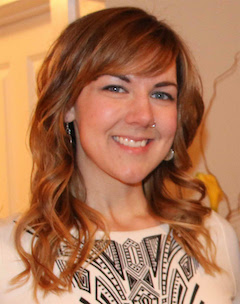 Alyssa Warne
Alyssa Warne
TEAM Scholar in 2017
Institute Attended: Teaching Language Through the Lens of Social Justice
What did you learn at the CARLA summer institute?
I was really inspired by the summer institute I attended. Firstly, I gained a much more in-depth knowledge of how to incorporate social justice themes into the curriculum we already have and how to help students navigate complex and often emotionally-charged topics. We came up with lots of culturally responsive ways to build community and trust in the classroom so that students can feel comfortable sharing their thoughts on potentially divisive topics and to develop a baseline understanding of our own cultural identity and, therein, cultural biases. Secondly, perhaps the thing we could most immediately implement was our ongoing discussion of "hot moments" and how to acknowledge and handle them when they arise in the classroom. We were able to share and reflect on moments that had already happened and brainstorm ideas with other participants on how to better address a similar situation in the future. I have found myself relying on our list of "preventive" actions often during this past semester and my students and I have enjoyed a very open, healthy, honest classroom environment as a result!
How did you use what you learned in your classroom?
For my follow-up activity, it was important to me to create something that could feasibly be implemented this school year, and since we teach in collaborative teams with common summative assessments for each unit based on the ACTFL Integrated Performance Assessment (IPA) model, it needed to fit within our already established curriculum and be "teachable" by all members of our collaborative team so that our student data can be collected and shared with administration. I chose to create an entire unit of study for Spanish 3 (Intermediate-Low proficiency) around the theme of child labor practices in Argentina. Using our pre-existing curriculum components of childhood and school vocabulary, paired with health and wellbeing from the subsequent unit, I created a 4 week unit that guides students through exploring their own childhood experiences, learning about the current situation in Argentina (children are exploited in the harvesting of mate tea leaves) and demonstrating comprehension with a reading and listening IPA, and finally explaining the causes and consequences of this practice coupled with personal anecdotes from their own lives in a formal letter to a mate production company in Argentina that the students would actually mail or email at the end of the unit.
Do you have any big takeaways to share?
At a time when language programs are at risk in public high schools, it was so empowering to create interdisciplinary connections and present language learning to all stakeholders in a way that aligns with common core standards and so clearly supports 21st century learning and the development of independent, aware, global citizens! I would highly recommend this institute to everyone - especially those willing to push themselves in their pedagogy and practice towards an activism-based critical pedagogy.
Alyssa Warne is a high school Spanish teacher at Wayzata High School in Plymouth, Minnesota. She will present information related to what she learned through the TEAM Scholar Program at the 2020 Central States Conference on the Teaching of Foreign Languages in Minneapolis.
Submitted February 2018.
The TEAM Scholarship Program is sponsored by CARLA and the MN Department of Education and is cosponsored by the Minnesota Council on the Teaching of Languages and Cultures (MCTLC).
